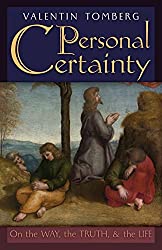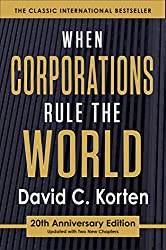
2023 Update:
Here is the first of a never-completed nine-part series of musings on Valentin Tomberg, Catholicism, Rudolf Steiner and the world tragedy, written many years ago in 2011. In recently re-visiting it, for the first time in years, I have seen fit to rewrite it a little. But for the most part it remains as it was, even if today it seems to me very slightly crude and immature in places.
My more mature thinking on Tomberg is found in my books, key articles like this one and the YouTube videos you will see peppered through the series. Still I think there may be valuable material in this series not found elsewhere and For navigation purposes, we list and link the nine parts here:
- Valentin Tomberg, Catholicism and the Counter-Revolution—Pt. 1
- Valentin Tomberg, Catholicism and the Counter-Revolution—Pt. 2
- Valentin Tomberg, Catholicism and the Counter-Revolution—Pt. 3
- Valentin Tomberg, Catholicism and the Counter-Revolution—Pt. 4
- Valentin Tomberg, Catholicism and the Counter-Revolution—Pt. 5
- Valentin Tomberg, Catholicism and the Counter-Revolution—Pt. 6
- Valentin Tomberg, Catholicism and the Counter-Revolution—Pt. 7
- Valentin Tomberg, Catholicism and the Counter-Revolution—Pt. 8
- Valentin Tomberg, Catholicism and the Counter-Revolution—Pt. 9
And now back to 2011 — Roger Buck
We have been considering the notion of the decay of civilisation in Valentin Tomberg’s writing.
And in this series, it is being suggested that Valentin Tomberg’s Catholic works are a twofold response – legal and hermetic – by an authentic genius and saint (albeit uncanonised) to world degeneration.
Now, the idea of degeneration into materialism is a notion, which one finds repeatedly through Tomberg’s later hermetic works. Perhaps, however, it is not among the most prominent of themes therein.
However, the reader of his earlier legal-political works could hardly miss the burning urgency of his heartfelt cry to arrest the continued descent into world materialism.
Yet even if this burning urgency is less obvious in the later hermetic writings, there is very much indeed to suggest that the same grave concerns were working still in the author’s heart.
In the last entry for example, we considered Tomberg’s hermetic reflections on the need for the devotion to the Sacred Heart of Jesus.
For whole nations the life of the soul as such has been (and still is) in grave danger, having been smothered and reduced to a minimum [by] the tidal wave of materialism that has flooded across the world in this century [and] the outpouring of “intellectual enlightenment” during the age of rationalism in the eighteenth century, which paved the way for materialism.
At that time the danger facing the human soul was so great that, in order to avert it, a special intervention from heaven proved necessary as a preventive measure …
This led to the cult of devotion to the most sacred heart of Jesus which spread rapidly in Catholic countries and took root there. Devotion to the sacred heart of Jesus was to save the soul of humanity.”
Valentin Tomberg, Lazarus Come Forth (p.255 in earlier Covenant of the Heart edition)
All of this begs the question as to the fate of the non-Catholic countries, without this devotion and without devotion to the Mother …
But leaving aside this passage at the moment, it must be said that in the hermetic Catholic works, the theme of ominous foreboding is less pronounced than in the legal-political works.
However, what is prominent in Tomberg’s hermetic works is a repeated challenge to the Enlightenment thinking that arose in the Eighteenth century.
This takes manifold forms throughout both Meditations on the Tarot and Lazarus Come Forth.
For example, there are the repeated and sustained contrasts between a moral versus a mechanical or materialistic thinking.
This weblog series is meant to be relatively accessible. We cannot fully probe the author’s intensive sustained consideration – over hundreds of dense pages – on the contrast between moral thinking versus that which is mechanical or automatic (one might even say kneejerk).
What we can do is point out that Tomberg returns to this theme again and again and again. He looks at it from repeated angles. Here then is just one relatively accessible example from Meditations on the Tarot:
He who wants to explain the phenomenon of smiling, for example, by the contraction of muscles in the region of the mouth and cheeks, and this latter through electrical impulses transmitted through the nerves from the centre called the “brain”, will in no way give an explanation of the phenomenon of “smiling”, even if he correctly describes the entire mechanical process in the muscles and nerves, for the simple reason that he disregards the joy of which the smiling is a manifestation and which set in motion both the muscles of the mouth and the electrical impulses of the nerves.
For it is not nerves and muscles which are manifested in smiling, but rather joy.
And just as the description of the mechanical process of the muscles and nerves is in no way a reply to the question: “What is smiling?” so is every mechanical explanation of whatever it may be, in no way an explanation of the whole, but rather it reduces questions to silence by shifting the subject of the questions from the domain of comprehensibility to that of incomprehensibility —from the light of consciousness to the darkness of the unconscious.
For what we call “mechanical” is in reality only the unconscious (or rather “that which is deprived of consciousness”) and is therefore inaccessible to consciousness, and therefore incomprehensible, unthinkable and unfeelable.
“Mechanicalism” is therefore not at all the realm of answers, but rather the graveyard for real questions [Above emphasis mine].
Anonymous (Valentin Tomberg) Meditations on the Tarot, p. 347-348.
Now I have given, as I say, a relatively accessible example of what Tomberg means by mechanical thinking and which he characterises as a movement to a dark realm without (real) thinking or feeling.
Again, this is but a single instance for the moment and those who want more depth than the above are advised to turn to the book itself.
Suffice it to stress now that Tomberg turns repeatedly to the problem of ‘mechanicalism”. His words may vary. His varying terms with shifting nuances include not simply mechanical, but also: automatic; superficial; materialistic; utilitarian.
There is also a sustained, profound exploration of the difference between thinking in terms of quantity versus a qualitative thinking.
The student of Tomberg will gather how through all of these things—including purely quantatitive thought—the author points to a darkening of consciousness that emerged prominently in Western civilisation with the so-called Enlightenment.
The question might arise, how did we as a society arrive at this post-Enlightenment ‘graveyard for real questions” – as Tomberg puts it?
How did we arrive at a civilisation that exalts the death of thinking? For the man of the pre-modern world did not suffer such “mechanicalism” to anything like the same extent as today.
Thus, we come back to the idea of degeneration. Although in his later hermetic writings, there are frequent allusions to how modernity has degenerated into mechanicalism, it is in Tomberg’s legal writings, where we have perhaps the fullest sketch of the degeneration into the mechanical.
These I want to explore. I would also like to explore the theme of mechanicalism in Rudolf Steiner. For the idea emerges in Steiner’s thinking very clearly indeed that this kind of thinking represents the gravest menace to society.
Indeed, in Steiner we find the ominous warning that such mechanical thinking is powered by evil and is in danger of turning us into something not unlike a race of robots …
Steiner is sometimes lumped together with New Age-ism. This, at least, is unfair.
For as we touched on last time, Steiner holds forth very dark images of our possible future, which is in stark contrast to the upbeat “Age of Aquarius” New Age-ism that drew from Theosophy.
No, Rudolf Steiner gives images of potential dystopia, with humanity menaced by real powers of evil – and with a burning need for Christ to counter these powers of evil, which threaten to turn us into robots …
Once again, in these weblog entries I have no wish whatever to endorse Rudolf Steiner’s ultimately tragic aspiration to a Christianity without Rome.
Here I merely want to appeal for justice to the man. Whatever the manifold problems a Catholic must necessarily find with his thinking, it would be mechanical, automatic, kneejerk thinking indeed to characterise Rudolf Steiner as simply a New Ager …
Yes, there is a continuity between Steiner’s ominous warnings of “mechanicalism” and the later Catholic Tomberg, which I hope to explore in this series.
As a last note for now, I would just like to say that my wife Kim has resumed blogging. Her latest entry is not only to do with the revelation of the Sacred Heart in Paray-le-Monial, but I also think that Kim’s entry indicates what Tomberg is pointing to – that the manifestation of the Sacred Heart was all to do with FEELING.
For the Sacred Heart appeared and spoke to St Margaret Mary: “I allowed Myself to feel” …
Yes, there is the need to allow the heart to FEEL, lest in our so-Enlightened rationalism, we become ever more mechanical and centaur-like.
More along these lines can be found at Kim’s weblog here.
That is all for now. But we shall resume with Valentin Tomberg’s decisive turn away from Steiner’s Anthroposophy to pick up the threads of a Nineteenth Century—largely French—Catholic response to ‘Enlightenment’ and revolution. It involves a Counter Revolution . . .
Foreword for Monarchy by Roger Buck

Buying Books at Amazon Through These Links Gives Us a Commission. This Supports Our Apostolate. Thank You if You Can Help Us Like This!












